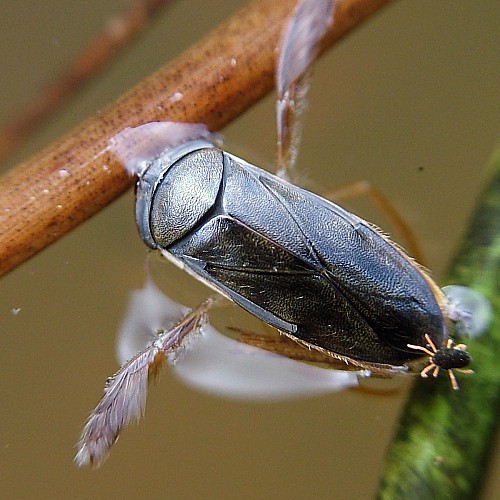
If you have ever gazed upon a pond or a lake and noticed a small bug that appears to be “rowing” across the surface, then you have already seen water boatmen. These small insects have long hind legs that are shaped similarly to boat oars, hence their name! They use these hindlegs to propel themselves through the water in search of tiny food items that they consume with their tube-like mouthparts.
Water boatmen are very common insects found all over the world – they can be found living up in the high mountains of Nepal, and in the low, hot elevations of Death Valley. They can be found in freshwater, brackish water, and salt water. While water boatmen can thrive in a variety of aquatic habitats, they are usually found in still freshwater ponds and quieter portions of streams and rivers. Vegetation is a very important habitat element for water boatmen, as it provides a food source and a secure surface to cling onto.
These small aquatic insects are slender and ovoid in shape, giving them an efficient body type to swim in a streamlined manner. The back legs of water boatmen are very long and “oar-like,” and covered in tiny, fine hairs called setae. Their bodies are flattened on the backside, and adorned with many dark, narrow crosslines. They have a dark brown coloration.
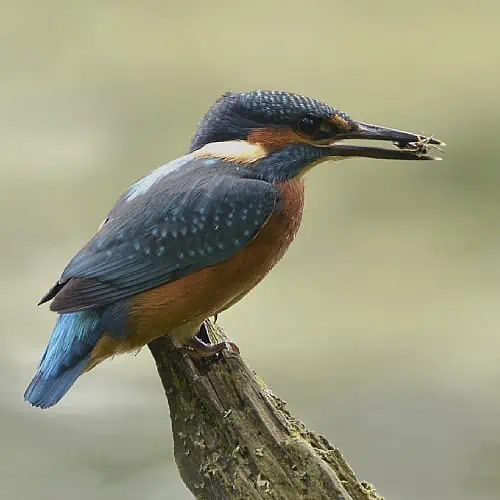
Water boatmen provide an important food source for many fish, including popular game species like trout and char. It is a common practice among fly-fishers create lures that resemble these unique insects! Simulating the natural jerking, swimming motion of the water boatmen using the manmade lure is sure to help you catch a big one.
Interestingly water boatmen eggs are considered a delicacy in Mexico. Entomophagy, the practice of eating insects, is common in many cultures. All water boatmen life stages from egg to adult are edible. In ancient Aztec cultures, adults were known as “axayacatl” and their eggs referred to as “ahuatle.” The eggs are also referred to as “mosquito eggs” and “Mexican caviar.” Water boatmen attach their eggs to sea grasses which are then removed by humans and turned into a flour. In Mexico, they remain an economically important “fishery” providing food for people and animals.
What Do Water Boatmen Look Like? (Water Boatmen Appearance)
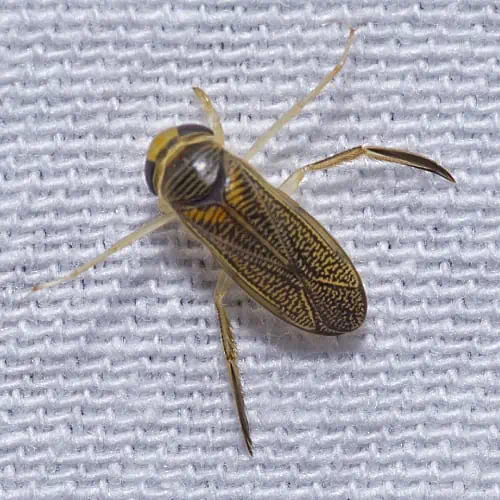
Water boatmen are often confused with a similar-looking insect, the backswimmer (Family: Notonectidae), so when it comes to identification, it is important to know what you are looking for!
In the United Kingdom, for example, some species of Notonectid are sometimes called water boatmen. The two groups belong to different families and mixing them up can have nasty consequences. Water boatmen possess mouthparts too blunt to injure a human, whereas backswimmers do. One identifying difference is that backswimmers lurk upside-down in the water and have a keeled back whereas water boatmen have flat backs and tend to swim upright through the water column.
Additionally, while water boatmen are rarely found in artificial water sources like pools or fountains, backswimmers frequent these areas. You will start to see more water boatmen when you take a closer look at ponds or quiet streams. Water boatmen are also attracted to light, and backswimmers are not. If you think you have both kinds of insects in your area, and you want to distinguish them, bring out a flashlight at nighttime!
While water boatmen and backswimmers have a similar streamlined, ovoid body shapes and hindlegs for rowing, backswimmers in the adult stage are typically much larger in size than adult water boatmen. Backswimmers are also more triangular, with a keeled dorsal surface (back) to help them swim upside down. Water boatmen only swim right-side up! Another way to distinguish these insects is by coloration. Water boatmen are typically dark brown in color, while backswimmers have a bolder patterning of black, yellow, brown, red, or white patches. Additionally, water boatmen have fine crosslines running across their backs, while backswimmers lack this feature.
Water Boatmen Habitats – Where Do They Live?

These hardy insects can be found all over the world! There are around 500 different species of water boatmen, all with slightly different niches. Most species of water boatmen prefer to reside in stagnant ponds, or slowly moving rivers and streams.
Water boatmen typically hang out near the bottom of the water column. Anchor themselves to vegetationas to help them evade predators. They cannot hide forever as water boatmen must return to the surface to breath. At the surface, they replenish oxygen in an air bubble that surrounds their bodies, allowing the water boatmen to remain under water for long periods of time.
To add to their list of abilities, water boatmen are also great at flying. You may see them creating swarms, especially during mating season in the spring and mid fall and around light sources.
What Do Water Boatmen Eat? (Water Boatmen Diet)
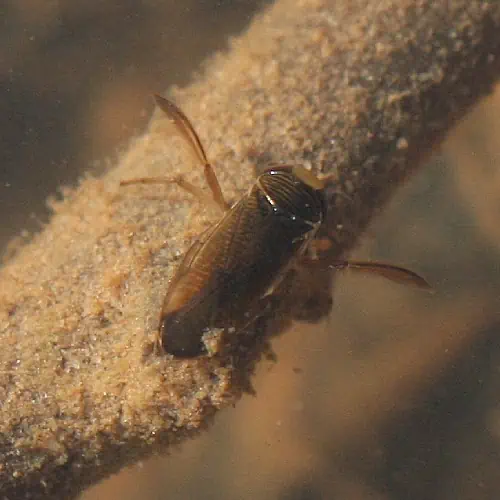
Other aquatic true bugs are equipped with a piercing beak that is useful for feeding, but water boatmen lack this feature that their relatives have. Instead, they are scavengers. They will swim with their heads down along the bottom of the water column searching for a tasty meal.
Water boatmen usually feed on living material. The majority of their diet consists of diatoms, algae, protozoa, nematodes, and small insects that they come across in the substrate. Once a food item as been secured with their hooked forelimbs, water boatmen use their mouthparts to suck nutritious juice out of their food items.
Water boatmen also provide an important food source for a variety of wildlife. Many species of fish, birds, frogs, and aquatic invertebrates will opportunistically prey on these insects. Their eggs are also eaten by fish and water birds. As both predator and prey, water boatmen serve a valuable and important piece within the aquatic food web.
Are Water Boatmen Dangerous or Poisonous?
Water boatmen are not dangerous, venomous, toxic, or otherwise harmful to humans. They are peaceful creatures that will simply swim away if you come near them.
The Life Cycle of Water Boatmen
When it comes to finding a mate, some water boatmen practice “stridulation.” Wherein they rub their front legs against their heads to create a squeaking sound. Crickets do this as well by rubbing their front wings together to create that familiar, high-pitched chirping sound during the warm, summer months.
Water boatmen spend a lot of time in the air during mating season, creating swarms that consist of thousands of individuals above their pond or stream habitat. After the mating process has ended, the female will dive back into the water to lay her eggs among the aquatic vegetation After a short period of 1-2 weeks, the eggs will hatch into small nymphs.
True bugs undergo “incomplete or “hemimetabolous” metamorphosis,” which is a style of insect development that is characterized by three step process from egg, to nymph, to adult.
Nymphs and adults are similar in appearance although nymphs do not cannot fly as only the adult life stage possess wings.. Under ideal environmental conditions, water boatmen can produce multiple generations in a single year. During the spring and summer months, adult water boatmen are most active and begin the mating process once again.
How to Attract Water Boatmen to Ponds? Are They Beneficial?
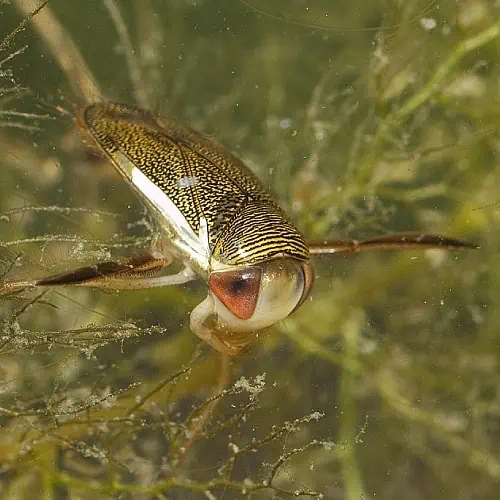
Water boatmen can be very beneficial to have around in your backyard pond as they provide a food source for fish and wildlife, and they also help to keep algae and plants under control! They are harmless to humans, and they do not sting or bite. Some species of water boatmen are known to feed on mosquito larvae – keeping mosquito populations down in and around your pond is another service that water boatmen might provide you!
These insects are efficient fliers, so if you do not have them in your pond already, they are fairly likely to fly in of their own accord. If you want to try to bring them in, attracting them is straightforward.
Because water boatmen are highly active at night and attracted to lights, putting some lights in, near, or around your pond that turn on at dusk might prove to be very effective. If conditions are right (remember, water boatmen are not picky!) then they are likely to establish a home in your backyard pond. Having some vegetation growing in your pond already is important in order for water boatmen to establish, but these insects can thrive under a wide variety of water conditions.
An established population of water boatmen will help reduce mosquito populations and keep your ponds clean. Remember that water boatmen and backswimmers might establish in similar habitats and you should only handle an insect if you are sure it is safe.


Very helpful thank you! But i was wondering if you can keep them as pets in a tank and if so what decorations and food would they need?
Interesting article I didn’t know they were insects!
The big question remains, do water boatmen swim on their backs, or not? At the beginning of this article you say yes, then half way through you say they don’t!
Exactly I agree backswimmers do swim on their back that article is WRONGO
Hi Holly, I do not recommend keeping Corixids as pets. These insects can fly and will easily escape an uncovered aquarium.
If you still want to keep them as pets despite the escape risk, I don’t think they need very much in their aquarium although a screen top is recommended. They like to hide in vegetation and other submerged debris but I have seen hundreds of these bugs in large cattle tanks without any decor at all. Food is a must, however. They consume very tiny organisms (algae, diatoms, small copepods or amphipods) so you need to have a very mature tank with abundant microfauna or a source of live food.
Nice article! although I completely disagree with the statement they cannot bite ahah. Found that out the hard way and they’re capable of a pretty hefty nip!
Agree completely. Just happened to me today. Picked it up from the ground and got what felt like a sting to my finger.
Hi Harry, Water Boatmen lack the mouthparts required to injure humans. They are only capable of eating very small organisms (diatoms, algae, nematodes, etc.). It’s most likely that you encountered a Backswimmer (Family: Notonectidae) which are highly predatory and readily deliver very nasty bites.
An easy way to tell the difference is by examining the back of the insect (without touching it of course!). Backswimmers have a back keeled like a boat (allowing them to more easily glide through the water upside-down) whereas Boatmen have a flat back.
Do they feed on fish frys
Do they eat tadpoles as i had many tadpoles and they seemed to decrease rapidly but have many boatman which i try to reduce there numbers from my nature pond to give others a chance